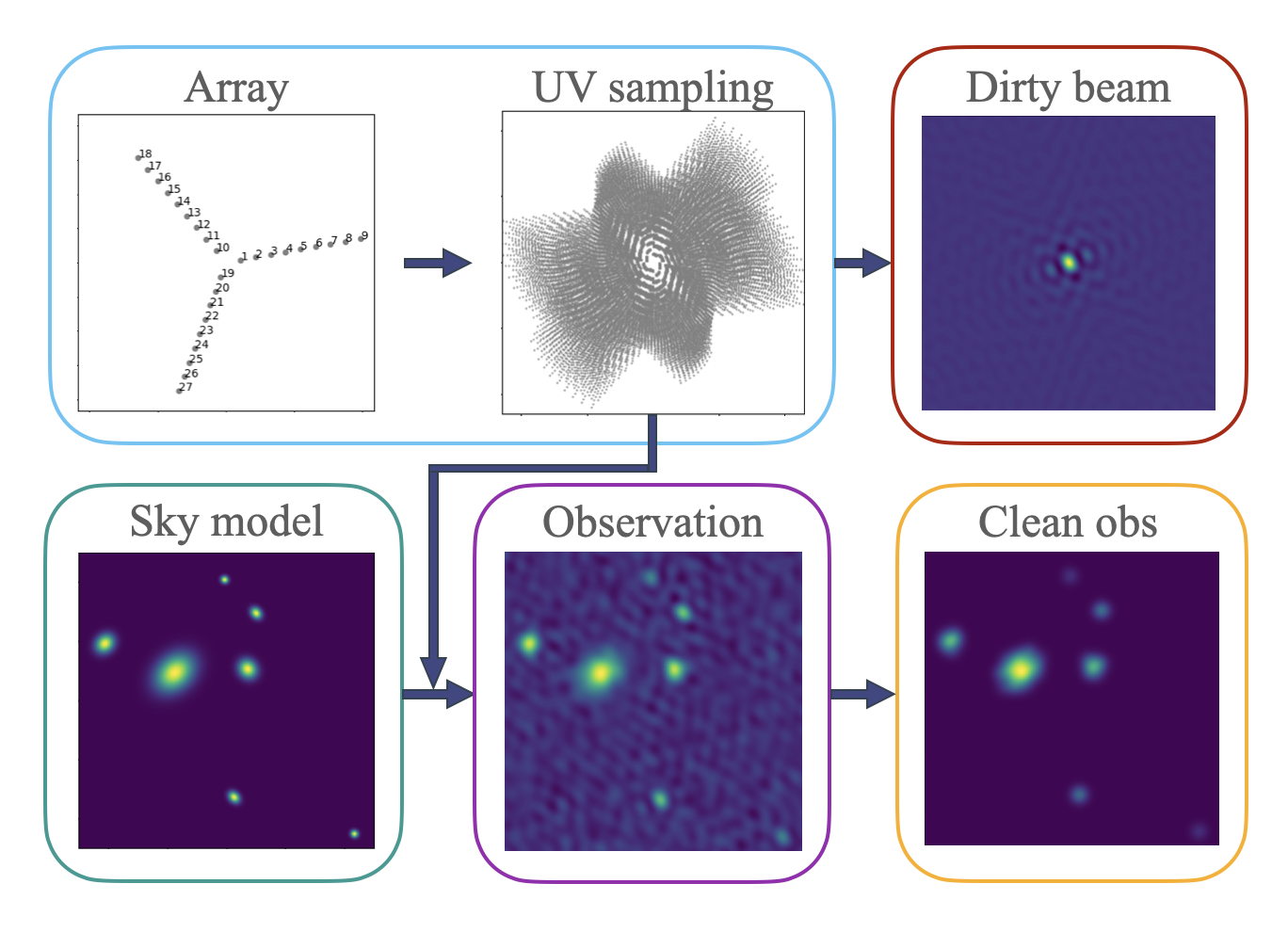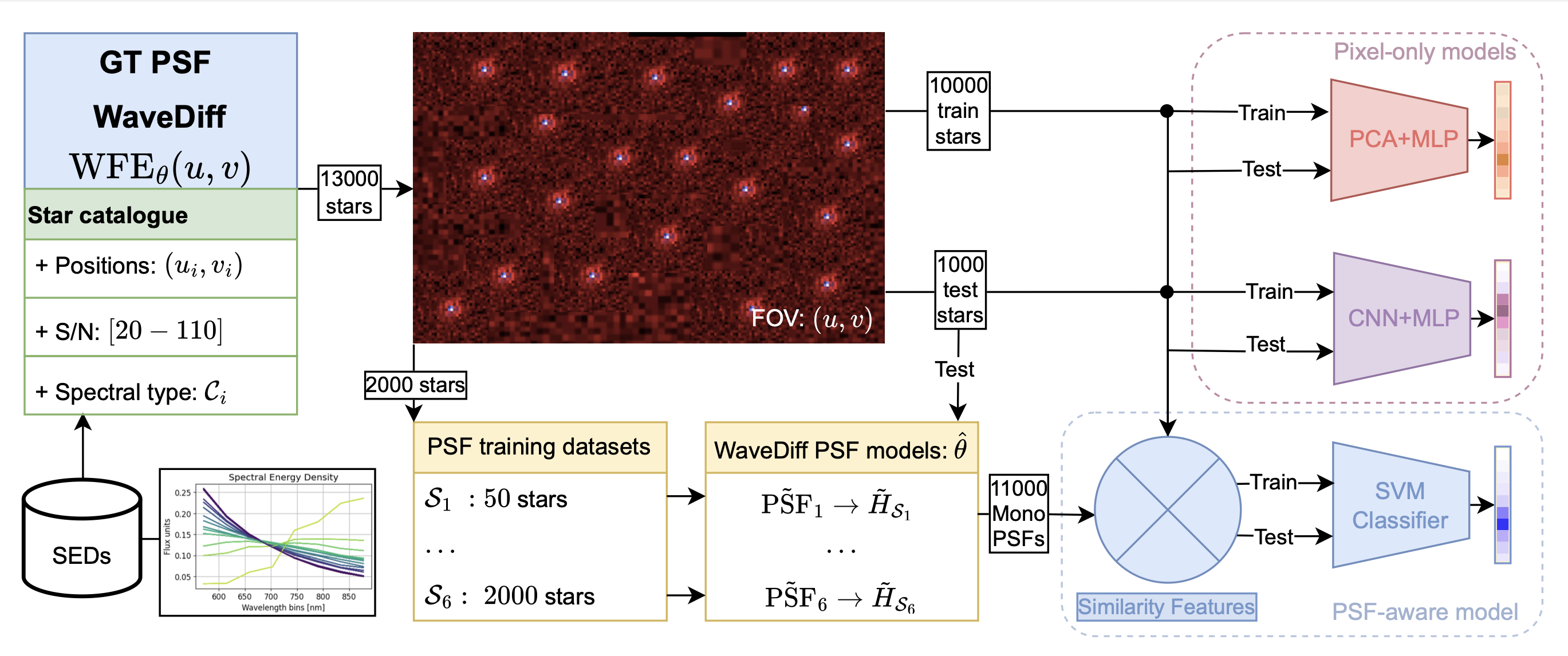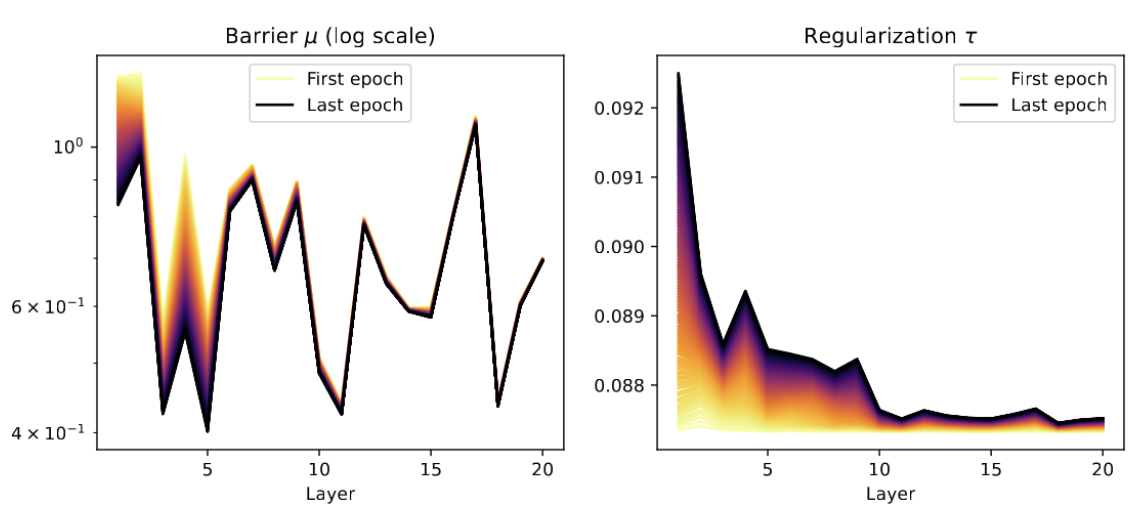Publications
publications in reversed chronological order.
2025
- argosim
 argosim: a Python package for radio interferometric simulations (submitted)Ezequiel Centofanti, Emma Ayçoberry, Samuel Farrens, and 4 more authors2025
argosim: a Python package for radio interferometric simulations (submitted)Ezequiel Centofanti, Emma Ayçoberry, Samuel Farrens, and 4 more authors2025In this paper, we present argosim a Python package for simulating radio interferometric observations. The argosim package is modular, lightweight and compatible with all major operating systems. Its computational backend is written in JAX which allows for greatly accelerated performance as well as the advantage of being fully differentiable. We detail the main argosim modules and describe how to use them to generate an observation, from the antenna positions to the cleaned image. The package is a fully open-source project, and its code is publicly available on GitHub.
@software{centofanti2025_argosim, author = {Centofanti, Ezequiel and Ayçoberry, Emma and Farrens, Samuel and Gullin, Samuel and Bensahli, Manal and Starck, Jean-Luc and Antoniadis, John}, title = {argosim: a Python package for radio interferometric simulations (submitted)}, version = {0.0.3}, year = {2025}, url = {https://github.com/ARGOS-telescope/argosim}, } - StellarClassification
 Breaking the degeneracy in stellar spectral classification from single wide-band imagesEzequiel Centofanti, Samuel Farrens, Jean-Luc Starck, and 3 more authorsA&A, Jan 2025
Breaking the degeneracy in stellar spectral classification from single wide-band imagesEzequiel Centofanti, Samuel Farrens, Jean-Luc Starck, and 3 more authorsA&A, Jan 2025The spectral energy distribution (SED) of observed stars in wide-field images is crucial for chromatic point spread function (PSF) modelling methods, which use unresolved stars as integrated spectral samples of the PSF across the field of view. This is particu- larly important for weak gravitational lensing studies, where precise PSF modelling is essential to get accurate shear measurements. Previous research has demonstrated that the SED of stars can be inferred from low-resolution observations using machine-learning classification algorithms. However, a degeneracy exists between the PSF size, which can vary significantly across the field of view, and the spectral type of stars, leading to strong limitations of such methods. We propose a new SED classification method that incorpo- rates stellar spectral information by using a preliminary PSF model, thereby breaking this degeneracy and enhancing the classification accuracy. Our method involves calculating a set of similarity features between an observed star and a preliminary PSF model at different wavelengths and applying a support vector machine to these similarity features to classify the observed star into a specific stellar class. The proposed approach achieves a 91% top-two accuracy, surpassing machine-learning methods that do not consider the spectral variation of the PSF. Additionally, we examined the impact of PSF modelling errors on the spectral classification accuracy.
@article{centofanti2025, author = {{Centofanti}, Ezequiel and {Farrens}, Samuel and {Starck}, Jean-Luc and {Liaudat}, Tobías I. and {Szapiro}, Alex and {Pollack}, Jennifer}, title = {{Breaking the degeneracy in stellar spectral classification from single wide-band images}}, keywords = {Astrophysics - Instrumentation and Methods for Astrophysics}, year = {2025}, month = jan, archiveprefix = {arXiv}, doi = {10.1051/0004-6361/202452224}, url = {https://doi.org/10.1051/0004-6361/202452224}, journal = {A&A}, volume = {694}, pages = {A228} }
2023
- DeepUnrolling
 Stability of Unfolded Forward-Backward to Perturbations in Observed DataCécile Valle, Ezequiel Centofanti, Emilie Chouzenoux, and 1 more authorIn 2023 31st European Signal Processing Conference (EUSIPCO), Sep 2023
Stability of Unfolded Forward-Backward to Perturbations in Observed DataCécile Valle, Ezequiel Centofanti, Emilie Chouzenoux, and 1 more authorIn 2023 31st European Signal Processing Conference (EUSIPCO), Sep 2023We consider a neural network architecture to solve inverse problems, which is built by unfolding a forward-backward algorithm. This algorithm is based on the minimization of an objective function which corresponds to a penalized least squares problem. In this context, ensuring stability is consistent with inverse problem theory since it guarantees both the continuity of the inversion method and its insensitivity to small noise. The latter is a critical property as deep neural networks have been shown to be vulnerable to adversarial perturbations. The main novelty of our work is to analyze the robustness of this inversion method with respect to a perturbation of the bias parameter of the network. In our architecture, the bias accounts for the observed data in the inverse problem. The analysis is performed by using tools of fixed point theory. Our theoretical results are illustrated by numerical simulations on a problem of signal restoration.
@inproceedings{deValle2023, author = {de Valle, Cécile and Centofanti, Ezequiel and Chouzenoux, Emilie and Pesquet, Jean-Christophe}, booktitle = {2023 31st European Signal Processing Conference (EUSIPCO)}, title = {Stability of Unfolded Forward-Backward to Perturbations in Observed Data}, year = {2023}, month = sep, volume = {}, number = {}, pages = {865-869}, issn = {2076-1465}, keywords = {Training;Inverse problems;Signal restoration;Perturbation methods;Signal processing algorithms;Reliability theory;Numerical simulation;neural networks;unfolding;stability;forward-backward algorithm;inverse problems}, doi = {10.23919/EUSIPCO58844.2023.10290061} }